Yesterday morning at Farmington Bay I photographed a subtle but interesting bit of kingbird behavior that caught my attention and piqued my curiosity.
The photos are of documentary quality only.
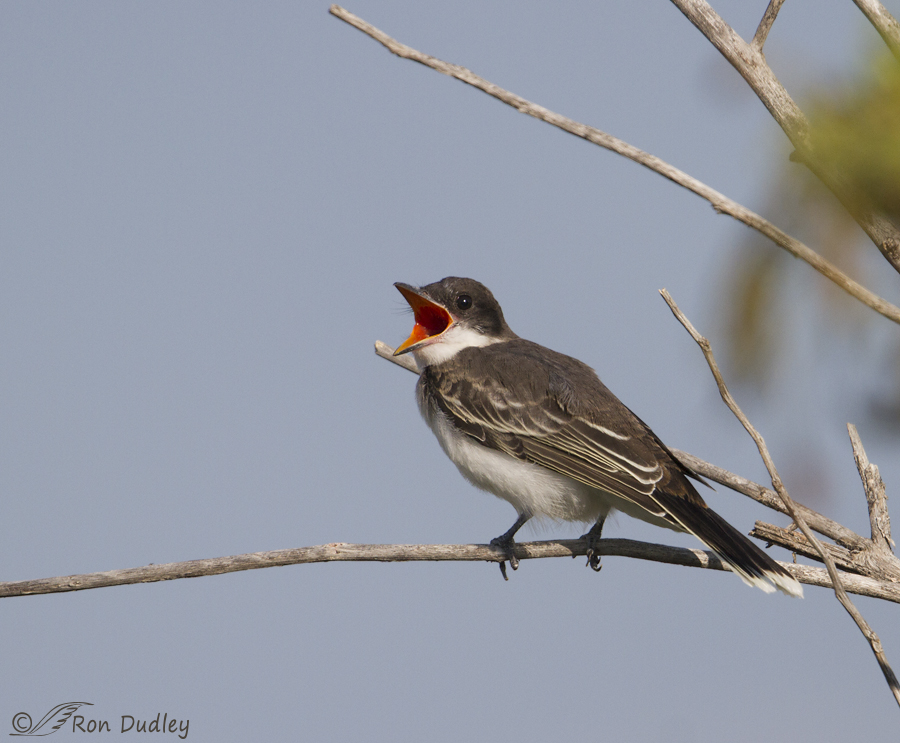
This recently fledged juvenile Eastern Kingbird was waiting in a tree as it watched its parent hunting nearby. Whenever the adult came relatively close with an offering the younger bird would begin to beg. As it waited it flew from branch to branch and I didn’t always have an unobstructed view of the proceedings but in one sequence I was able to document the behavior fairly clearly when the parent brought in a large dragonfly for the youngster to gobble down.
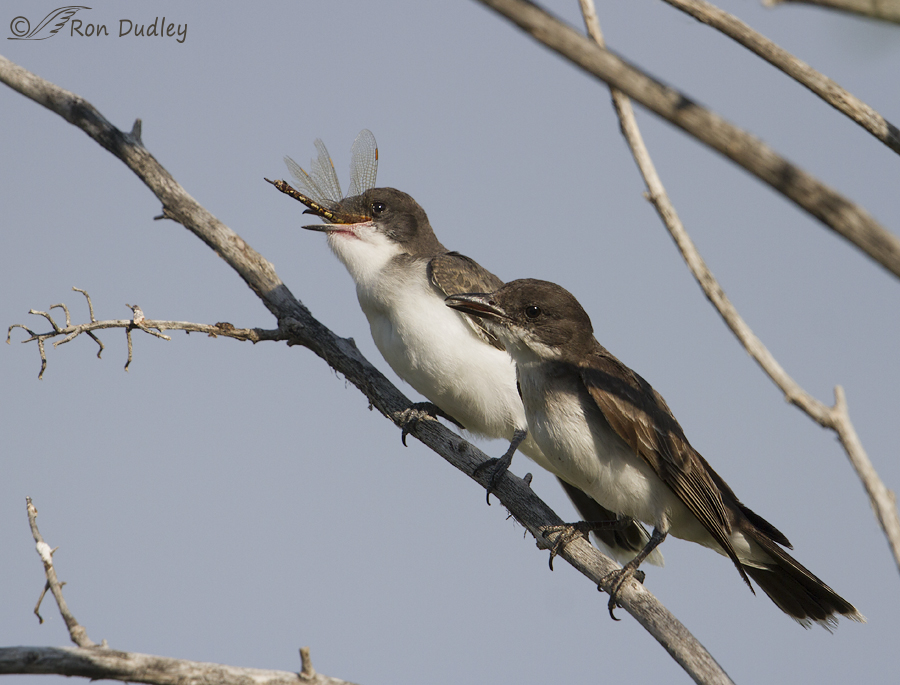
It wasn’t an easy meal to swallow and the young bird struggled with it.
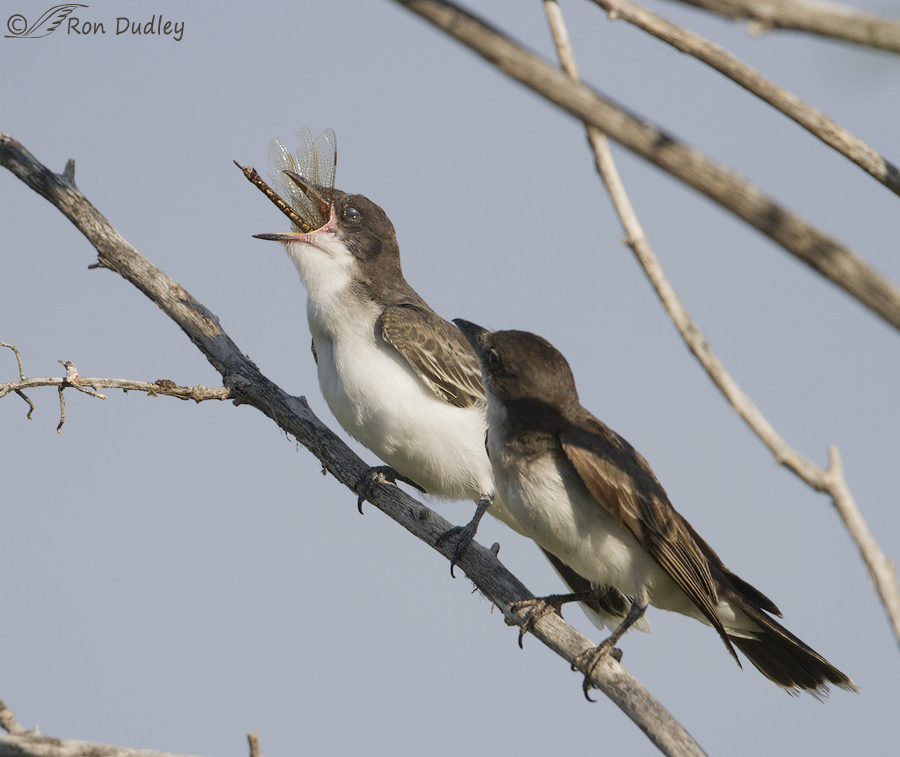
The adult watched the attempt at swallowing very carefully…
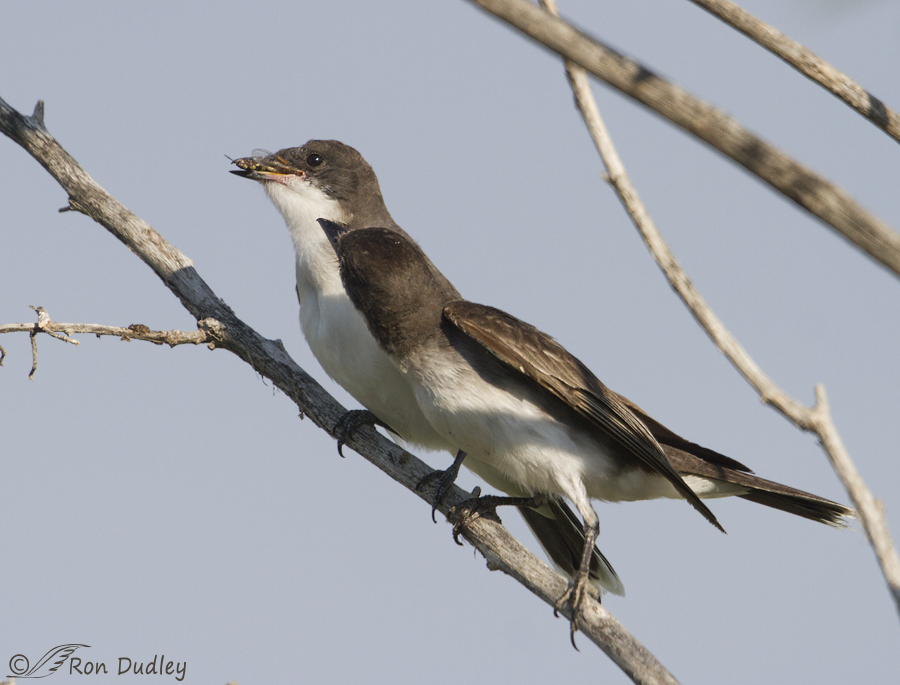
and when it saw that the fledgling was having difficulties it moved up on the branch, actually sharing the same perch-space with the young bird.
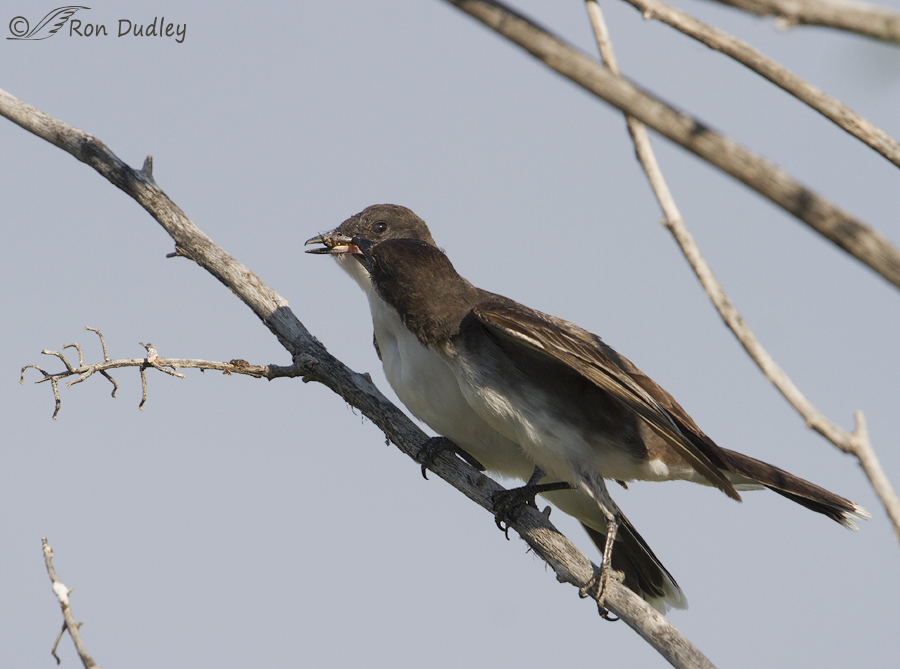
Eventually (the swallowing process was a slow one) the adult even nibbled at the gape of its offspring.
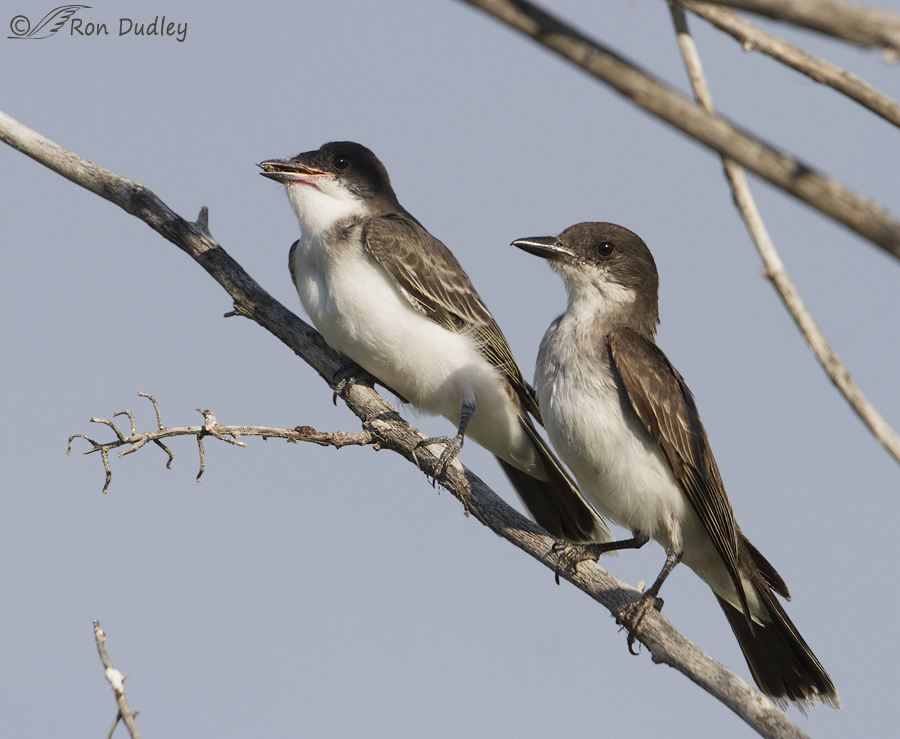
When the last of the dragonfly had finally passed the bill-tip of the fledgling the adult backed off and once the insect had completely disappeared from view it flew off to hunt some more.
I was interested by how “in your face” the parent was during the swallowing process and by the fact that the adult actually nibbled at the youngsters beak as it tried to swallow the food. The same behavior did not occur when the food item was smaller and easier to get down. I highly doubt that the parent was trying to steal the insect away from its offspring so I wondered if the behavior was a form of encouragement – perhaps it triggers renewed effort at swallowing, especially after the competition for food that occurs with siblings in the nest.
Just another one of the “little things” that I wonder about.
Ron


Hmmm, something like a bird’s version of “eat your vegetables.” Nice to see how attentive the adult is, and I believe it is encouraging the young one.
I love these photos! I would guess that the parent was trying to stimulate swallowing in the chick. It’s priceless that you are able to capture behaviors like this. The series made my day.
Curiosity is one of my defining characteristics, so I loved this series. Another BIG little moment. Thank you.
As a foster mom of baby birds, a permitted rehabilitator, I know there have been a few times when I overestimated the swallowing capacity of youngster and had to snatch back a morsel. The young ones grow so quickly. What didn’t fit yesterday may go down easily today. So just guessing that Mom Kingbird knew it was a yummy that was on the cusp of just
too danged big to fit!
What a priceless moment you have captured! Thank you, Ron!
Regardless, it is very sweet, isn’t it!
Yup!
I have seen similar behavior from adult Bullock’s orioles feeding their young.
Your photos are so incredible ~ very inspiring to an amateur photographer like me! I recently (found and) began subscribing to your blog and am enjoying it very much as well as learning from it. Thank you for sharing your talent.
Welcome to my blog, Kathleen. I hope you enjoy it down the road.
These are absolutely stunning photographs! What a joy to see the feeding/eating process. Thank you!
You’re very welcome, Jane.
great series love the looks of the parent..;-)
Thanks, Spencer.
In my humorous writer’s head I hear this.
Mom! MOM! MOMMMMM! I’m hungreeeeeee!
Here. See if this won’t shut you up for a bit.
It really is an engaging series of shots, Ron!
Could be, Arwen – when they’re begging for food they can seem pretty annoying.
I love this sequence! I noticed in the second shot that the young bird’s eye appeared clouded – was this the nicitating membrane? If so, might this have signaled distress or do you think it was just coincidental? I think if I was the mother, I’d be worried by this struggle, too! (I won’t get into what the dragonfly was thinking…)
Alison, yes that effect on the eye is caused by a closed nictitans. And no, it’s not coincidental – it’s a reflex action that occurs in certain situations when the eye is vulnerable to injury, as in swallowing large prey like this.
You take plenty of “Beautiful Bird” photos, but it’s the behaviors that are most interesting and educating…and for me, most captivating…
How i would like your stuff incorporated into a bird behaviour documentery, accompanied by your comments, and if appropriate, the comments of others…..it would be fascinating. I could watch hours of it…it wouldn’t have to be in any particular order.
Sounds like a lot of work, Patty. You know how lazy I am…
Great documentary although I though the pictures were great!! I think the Mother was being careful that her child didn’t choke on that big bug!! I bet both of them were relieved when that bug finally went down the hatch!!!
I’ll bet you’re right, Ellen!
Awesome!!
Thanks, Bill.
One of your best sequences…the attentiveness of the parent is wonderful!
Thanks, Patty. I almost deleted all these images until I better noticed what was happening on my computer screen.
I don’t care if I am anthropomorphizing. That bird is definitively trying to help the youngster swallow the prey. And look at that proud expression when the offspring finally made it.
Wonderful images. Thanks for sharing.
Could be, Jorge. Could be. Thank you.
Very interesting sequence…makes me wonder if the parent was trying to make the “morsel” a little smaller and easier for the young bird to swallow…certainly seems to be aware of the struggle, and possibly, trying to help.
I’m not sure what was going on, Patty but it’s my guess it was a way to encourage or stimulate swallowing…
Great shots and interesting behavior to see. Thanks for making that possible Ron!
Charlotte
Thank you, Charlotte.
that’s an amazing observation … amazing series of images, Ron!!!!! Very cool!!!!!
Glad you like them, Lois. Thanks.
Ron, it reminds me of new human moms scraping drops of food off newborns lips and pushing them in the mouth. In this case your sequence reminded me of human behavior, not anthropomorphizing. Wonderful series. Thanks
Yes, it does seem somewhat similar to the human behavior you describe, Diana – at least on the surface. Thank you.